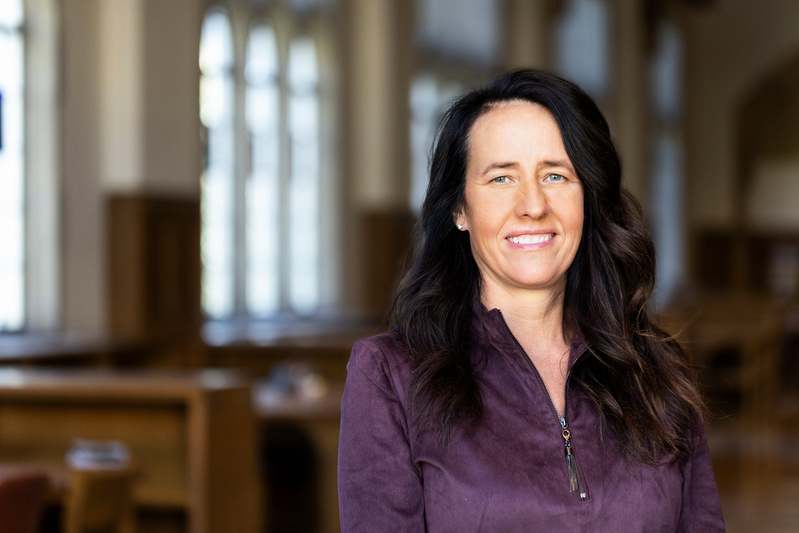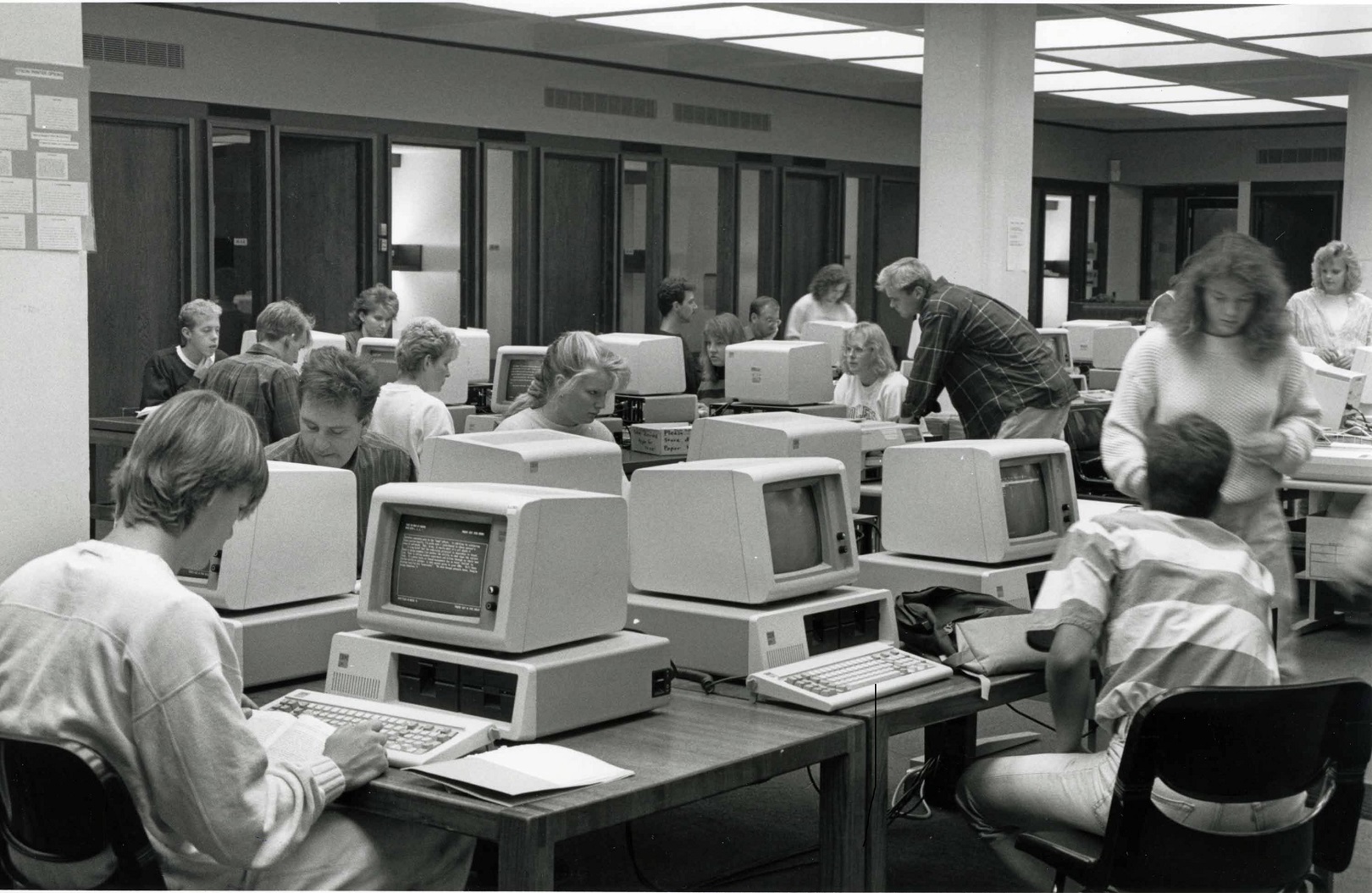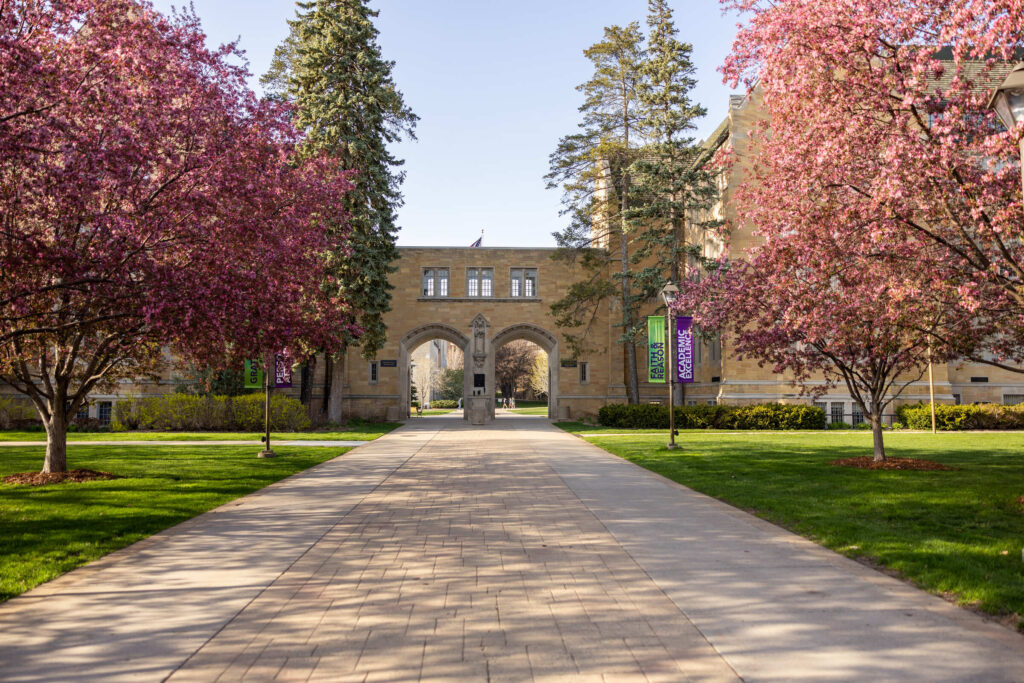As early as 1960, discussions began at St. Thomas about establishing a computing center on campus. Such a center would help with administrative needs like class scheduling, grade computation and fiscal management. Additionally, the center was envisioned to be an essential teaching tool for students in the school’s business and the science programs.
In 1963, through the Program for Great Teaching effort, St. Thomas raised an initial $50,000 toward the establishment of a computing center with $25,000 coming from a grant from the National Science Foundation. The initiative received an added boost when the Control Data Corporation generously donated a state-of-the-art system worth $180,000 to the institution. Housed in the lower level of Aquinas Hall, the computer center opened in April 1964 with a 1604-A computer with an 8K memory, an IBM punch card control system, a punch card reader, and four magnetic tape storage units.

Affectionately nicknamed “The Monster,” this system was used through the 1960s for a variety of purposes. It streamlined the school’s course registration process and reduced the time for creating grade reports from weeks to days. A rarity for its time, the system operated as an open system, facilitating shared usage between administrators and students alike. Mathematics professor James Lindsey taught a series of two computer courses which introduced students to the components of the system and taught them basic programming.
As the 1970s dawned, the need for computing resources grew exponentially on campus. To meet these burgeoning needs, St. Thomas entered into an agreement with the University of Minnesota and other colleges in the state. Together, they embarked on a transformative endeavor: developing a time-shared mainframe computer system accessible via telephone lines. This innovation was particularly beneficial to students enrolled in the newly established Quantitative Methods and Computer Science Department, granting them access to the system through specially designated terminals.

The late 1970s marked a new chapter, characterized by the redesign and automation of business operations. This period saw the acquisition of the PRIME minicomputer system, initially utilized for financial and payroll management. However, its capabilities extended further, influencing various departments such as Facilities, the Registrar’s Office, and Food Services. The rapid growth in demand led to the procurement of a VAX 8520 system in 1988, further reinforcing the school’s administrative computing prowess.
The debut of the Learning Center within the basement of the O’Shaughnessy Educational Center in 1971 marked another pivotal moment. Outfitted with CRT terminals, this hub became a hot spot for student learning and innovation, offering access to the mainframe system. The late 1980s witnessed a seismic shift with the advent of personal computers, prompting the Learning Center to evolve yet again. This transformation introduced 100 terminals, encompassing both IBM and Apple computers, catering to the ever-growing needs of the student community.
Stepping into the 1990s, technology continued to permeate every facet of education. Computer labs emerged across the campus. Academic departments like Mathematics set up labs equipped with computers hosting specialized software packages. A significant milestone arrived in 1995 with the launch of St. Thomas’ inaugural official website, a precursor to the innovative online platforms that underpin today’s educational landscape.
Computing on the St. Thomas campus continues to expand. On Sept. 7, 2023, a new record for devices on the university’s network was set: 20,568 (10,948 wireless and 9,620 wired).




More Tales from the Archives
-
Tales from the Archives: NeighborFest
Quotes from the Quad -
Tales from the Archives: New Student Orientation
People & Culture -
Tales from the Archives: The Arches
People & Culture -
Related Content








